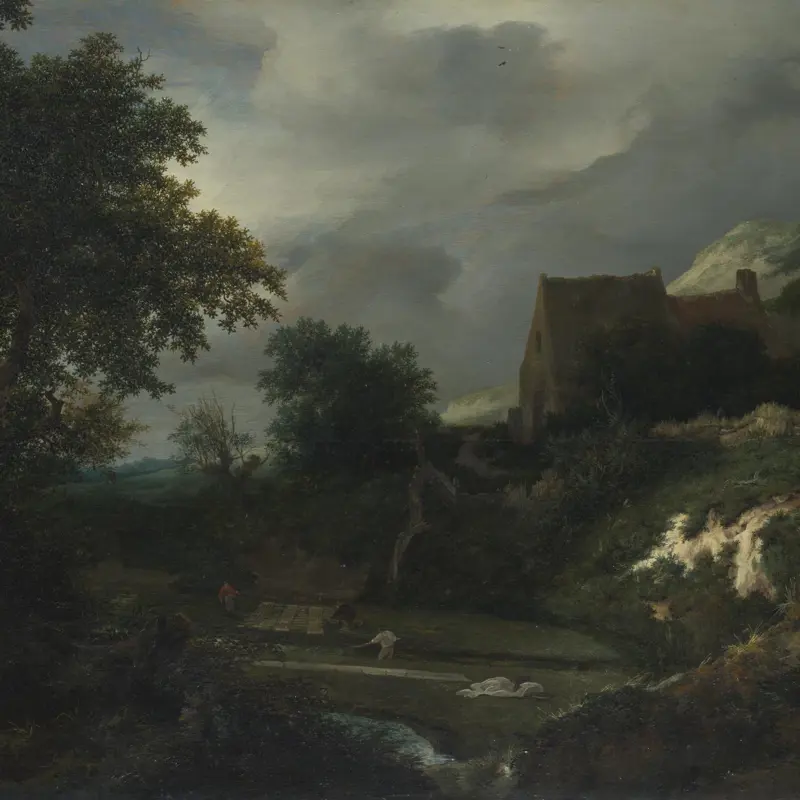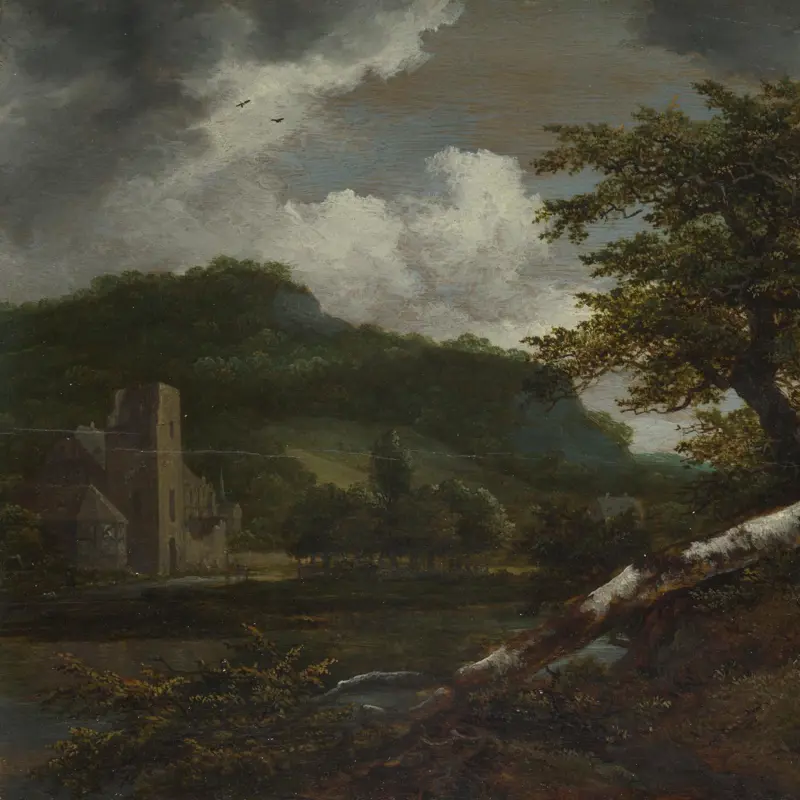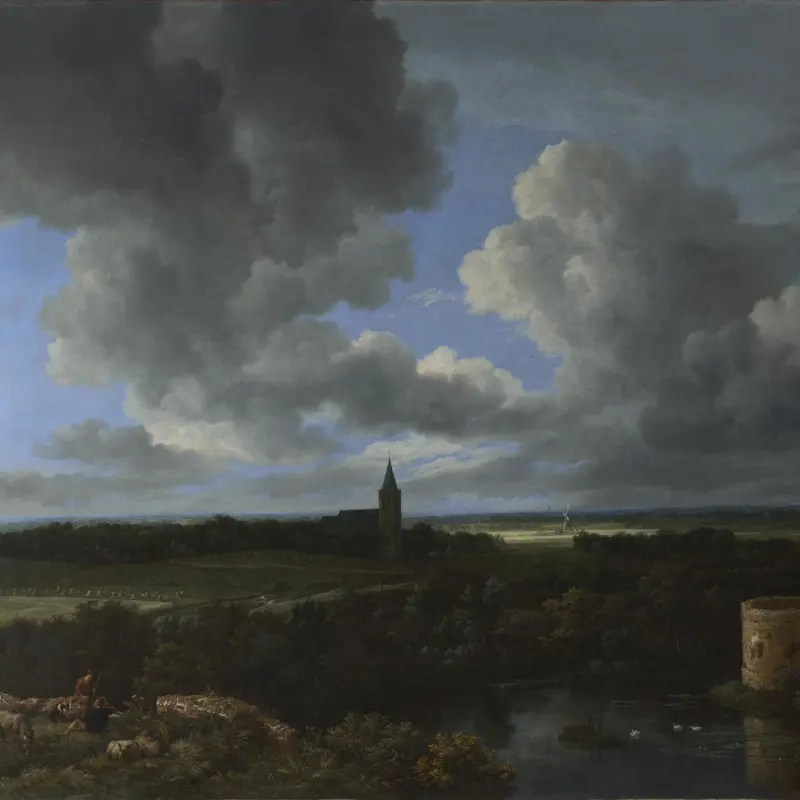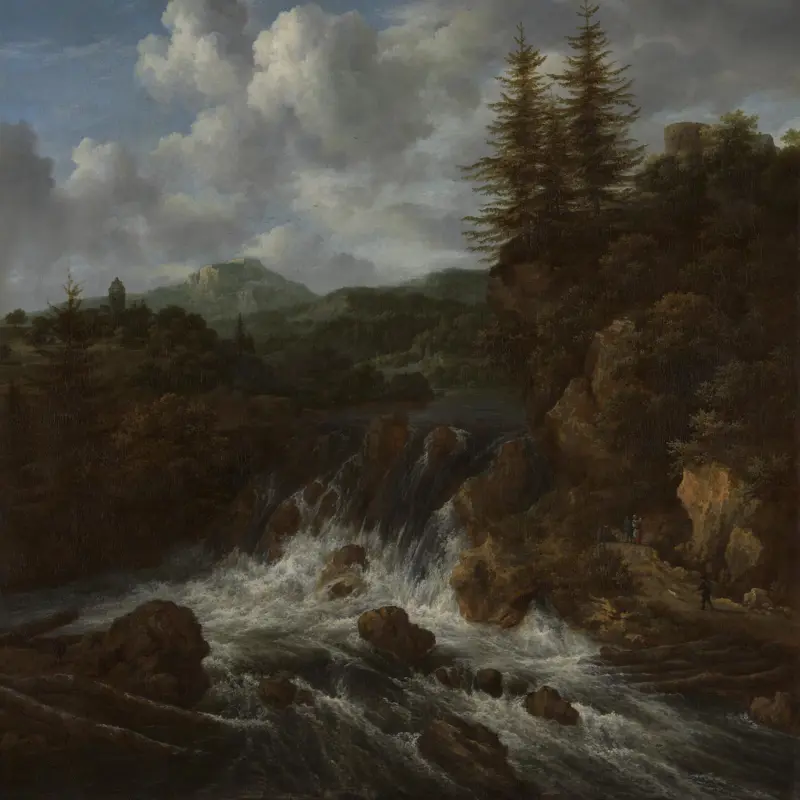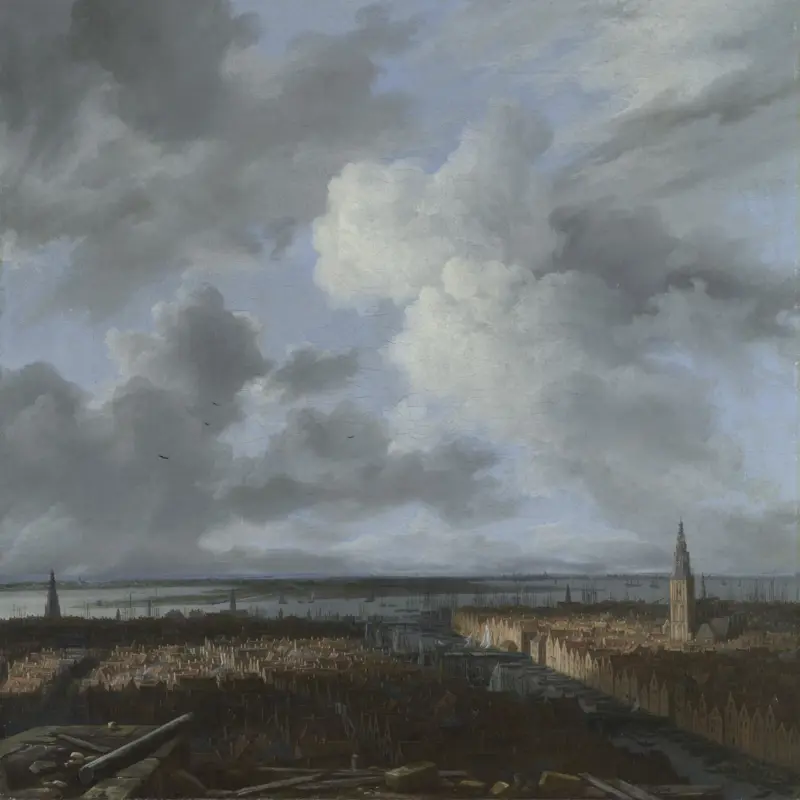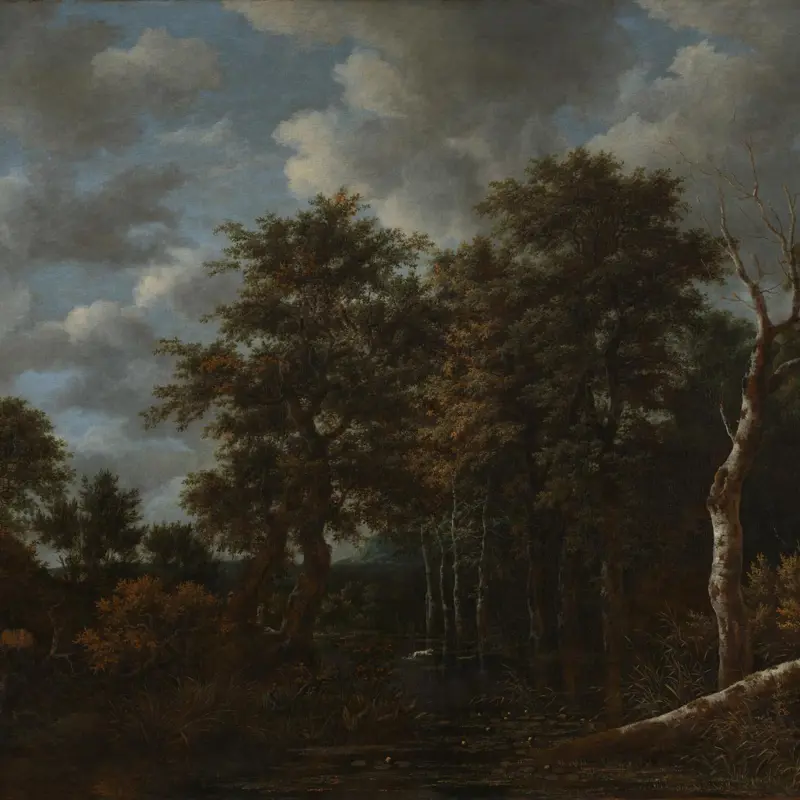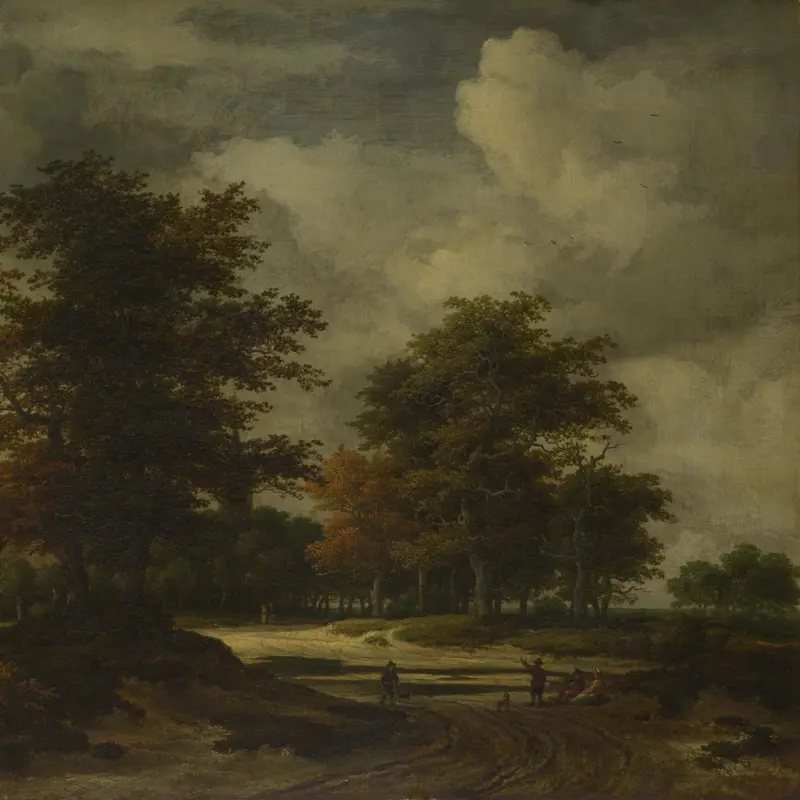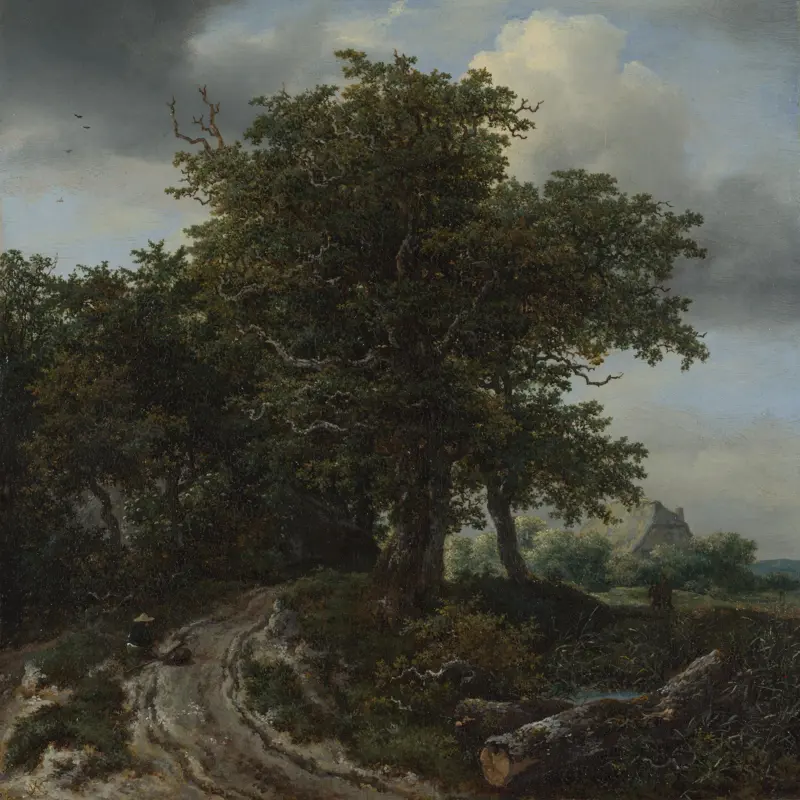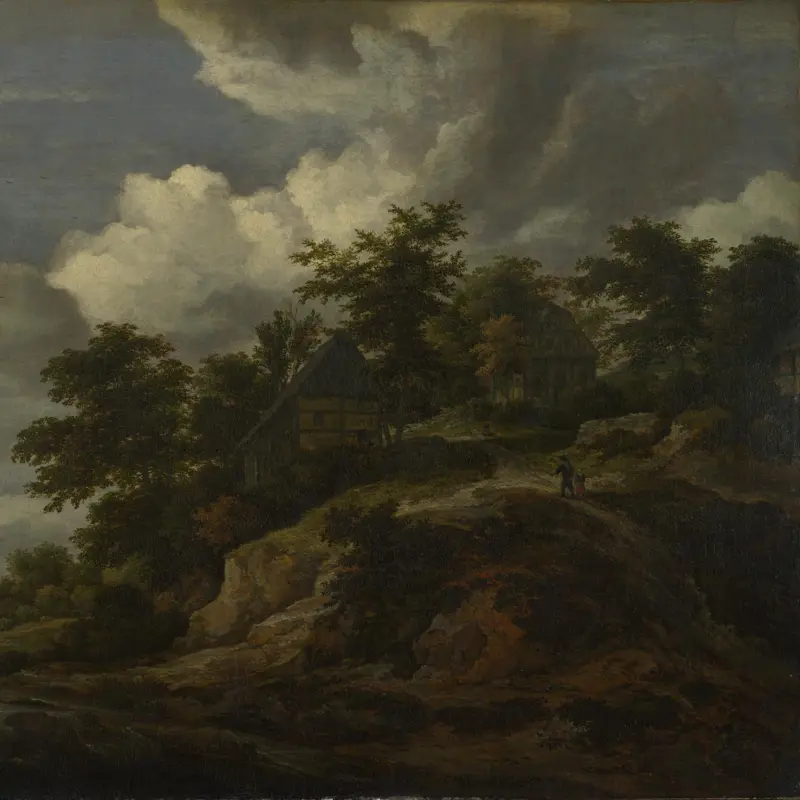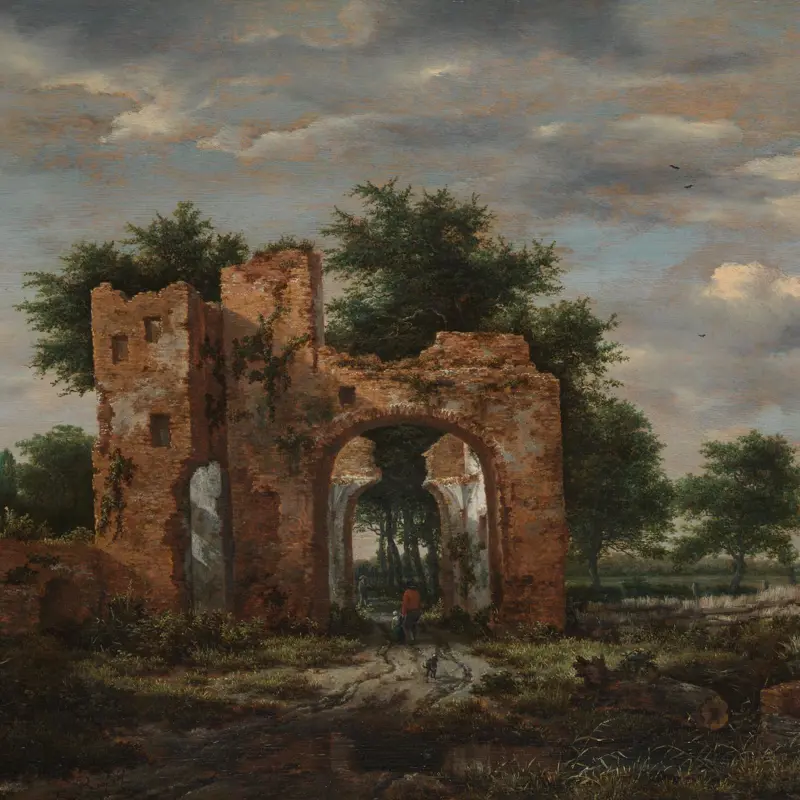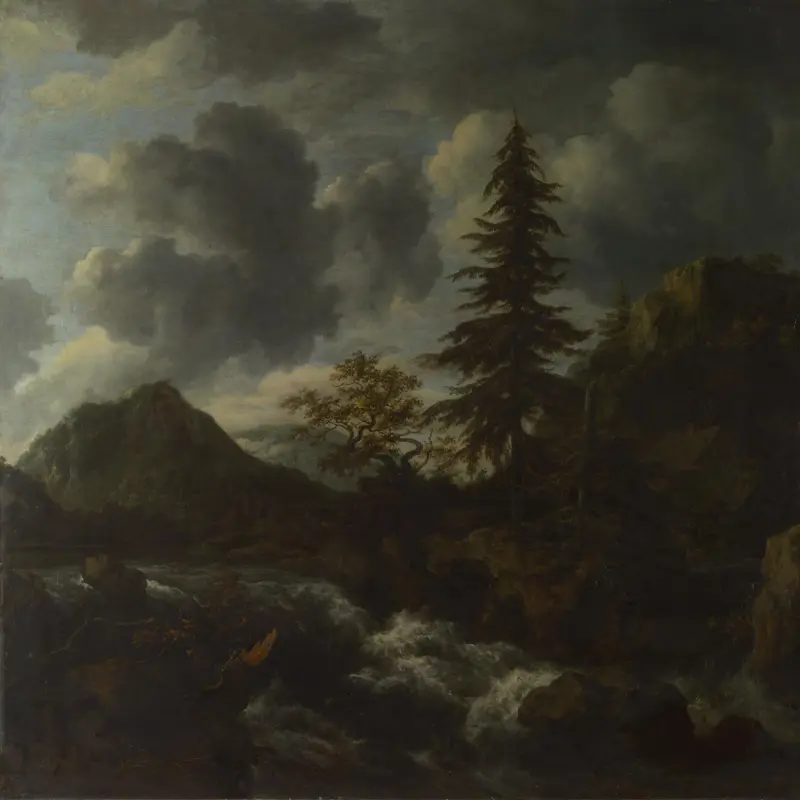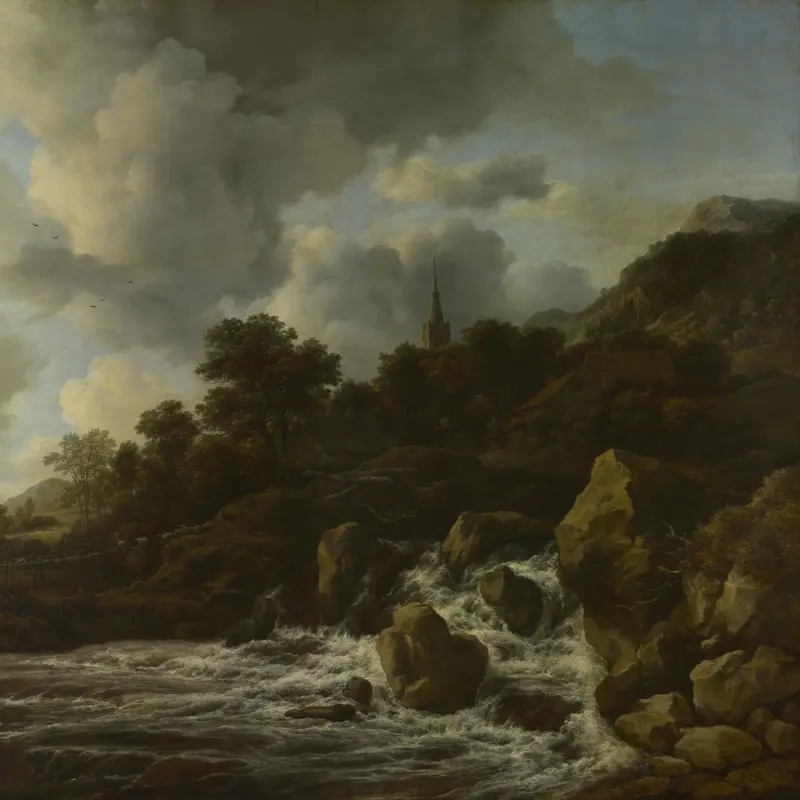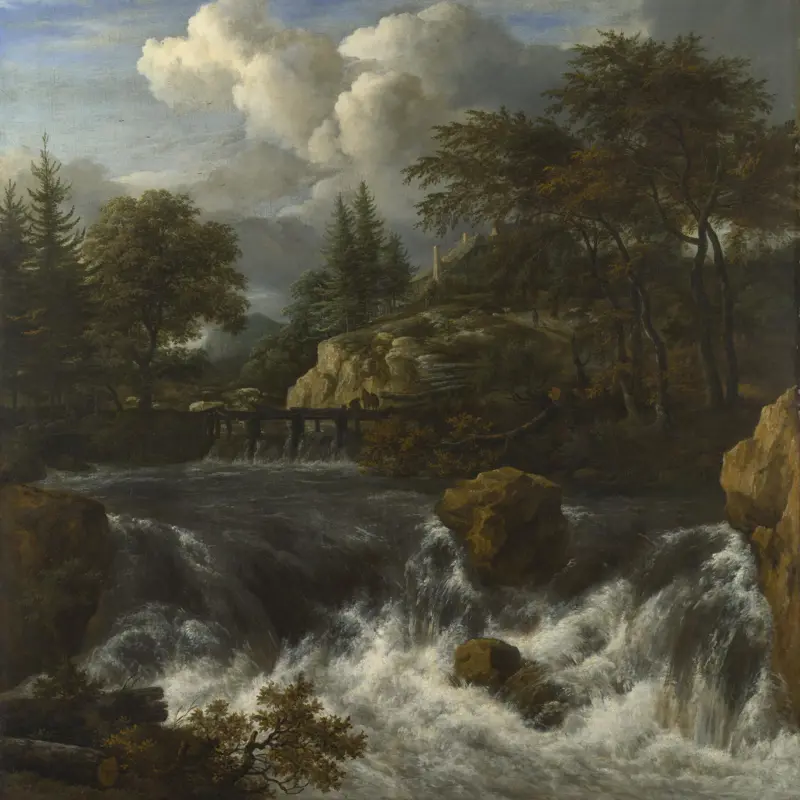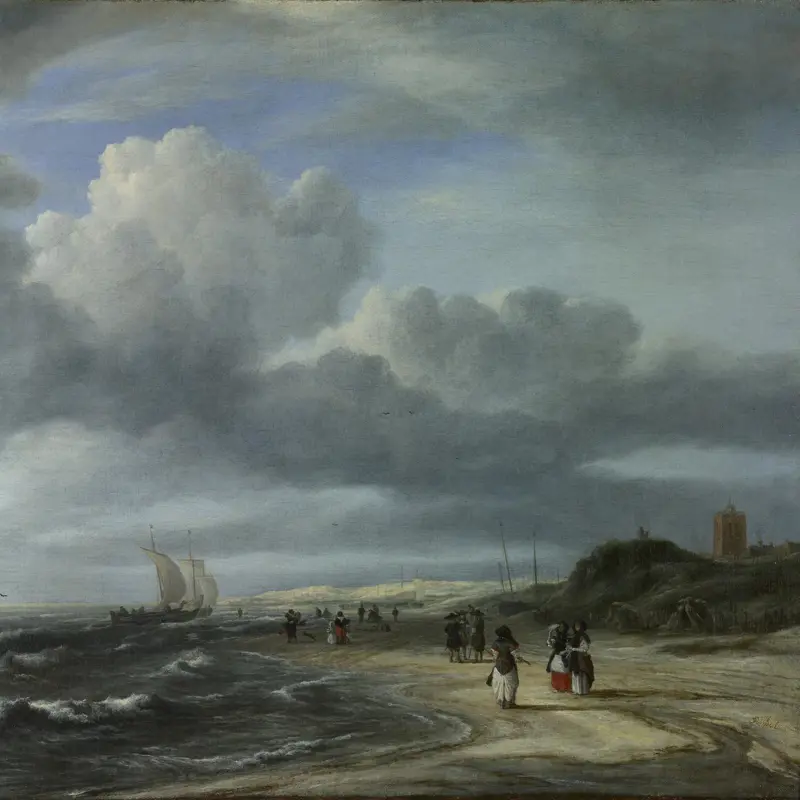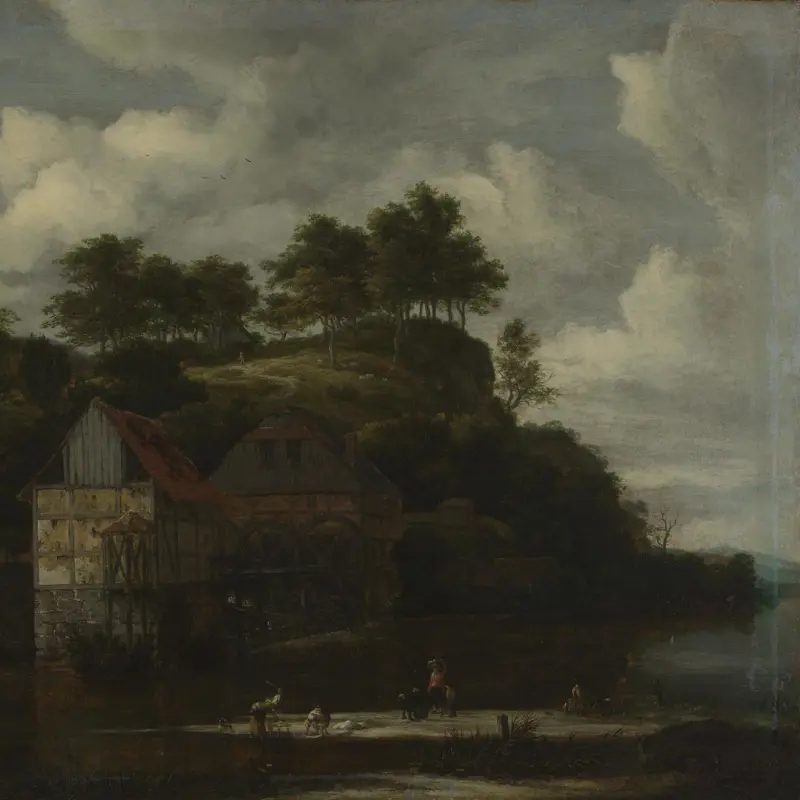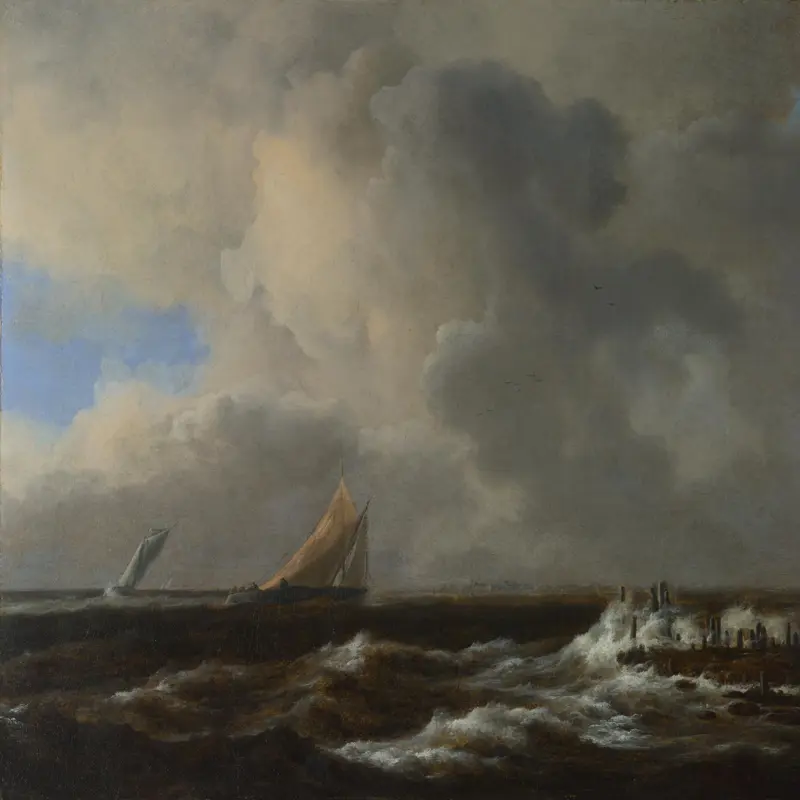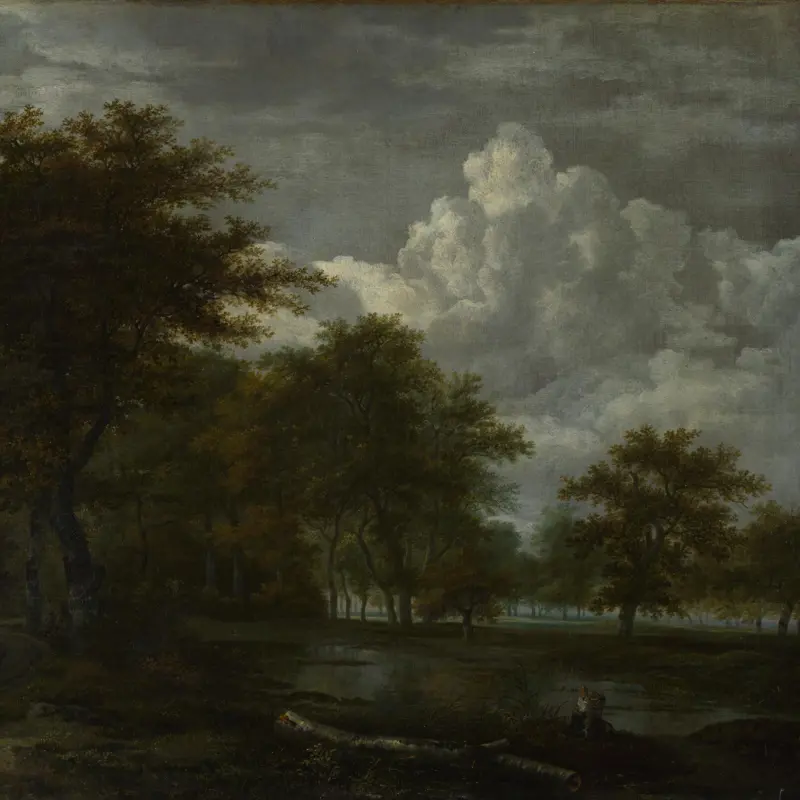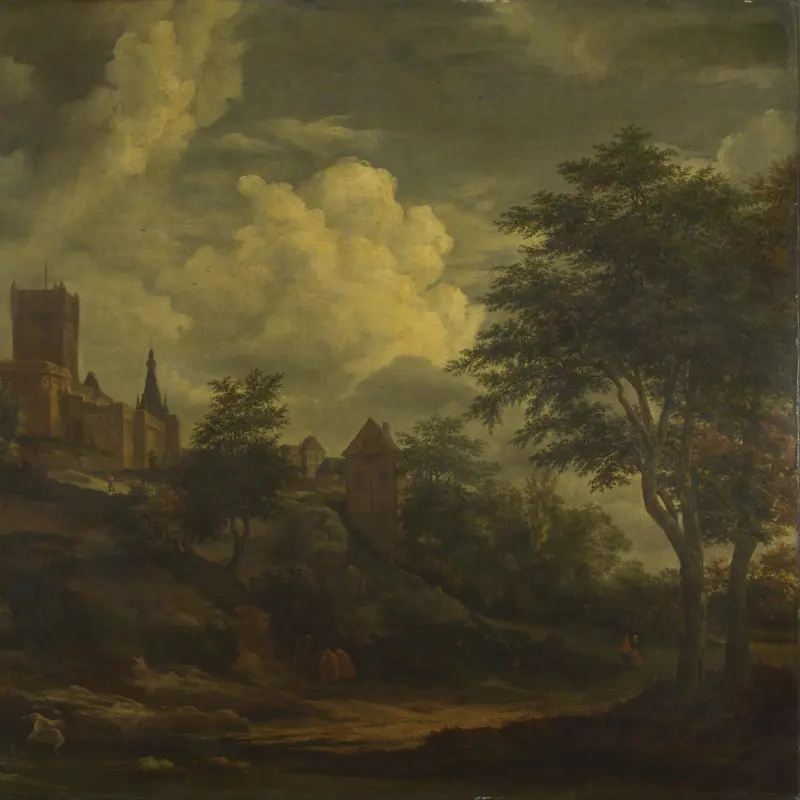Jacob van Ruisdael, 'A Cottage and a Hayrick by a River', about 1646-50
About the work
Overview
This is an early work by Jacob van Ruisdael, probably made when he was only about 20 years old, around the time that he qualified as an artist and joined the painters’ guild in his home town of Haarlem. He has built the composition around a stand of scrubby trees and a farmhouse on the edge of a river – and made it all the more artistically challenging by choosing a backlit scene. While this increases the visual impact of the trees against a bright sky, it required him to evoke the effects of light filtering through them.
If you look closely at the brushwork here, you can see the techniques that van Ruisdael used to create a convincing effect. He has built up an impression of the myriad colours of the leaves with thousands of tiny dabs and smudges of different greens, browns and yellows, as well as a few tiny flecks of white.
Key facts
Details
- Full title
- A Cottage and a Hayrick by a River
- Artist
- Jacob van Ruisdael
- Artist dates
- 1628/9? - 1682
- Date made
- about 1646-50
- Medium and support
- oil on wood
- Dimensions
- 26 × 33.4 cm
- Inscription summary
- Signed
- Acquisition credit
- Salting Bequest, 1910
- Inventory number
- NG2565
- Location
- Not on display
- Collection
- Main Collection
- Previous owners
Provenance
Additional information
Text extracted from the ‘Provenance’ section of the catalogue entry in Neil MacLaren, revised and expanded by Christopher Brown, ‘National Gallery Catalogues: The Dutch School: 1600–1900’, London 1991; for further information, see the full catalogue entry.
Bibliography
-
1829
J. Smith, A Catalogue Raisonné of the Works of the Most Eminent Dutch, Flemish, and French Painters: In Which is Included a Short Biographical Notice of the Artists, with a Copious Description of Their Principal Pictures […], 9 vols, London 1829-1842
-
1907C. Hofstede de Groot, Catalogue Raisonné of the Works of the Most Eminent Dutch Painters of the Seventeenth Century, 10 vols, London 1907
-
1907C. Hofstede de Groot, Catalogue Raisonné of the Works of the Most Eminent Dutch Painters of the Seventeenth Century, 10 vols, London 1907
-
1960Maclaren, Neil, National Gallery Catalogues: The Dutch School, 2 vols, London 1960
-
1991Maclaren, Neil, revised by Christopher Brown, National Gallery Catalogues: The Dutch School, 1600-1900, 2nd edn (revised and expanded), 2 vols, London 1991
-
2001
C. Baker and T. Henry, The National Gallery: Complete Illustrated Catalogue, London 2001
-
2004G.S. Keyes, Masters of Dutch Painting: The Detroit Institute of Arts, Detroit 2004
About this record
If you know more about this work or have spotted an error, please contact us. Please note that exhibition histories are listed from 2009 onwards. Bibliographies may not be complete; more comprehensive information is available in the National Gallery Library.

